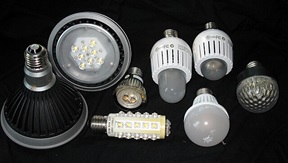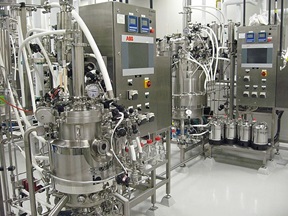Engineers have developed a new way to exert control over bioreactions: light. Using light of the correct colour can promote the desired reaction and hence keep costs down in biomanufacturing. As highlighted in an article on worldbiomarketsinsights.com.

We are discussing precision fermentation here, the art of forcing microorganisms to produce as much as possible of a desired compound. We might even circumvent the problem of genetic modification, as companies succeed in producing different substances using different wavelengths. Although this is not an easy task. Productivity is one of the main questions, keeping costs down.
Provectus
One of the companies in this field is Provectus Algae. They use a combination of LED lighting and a photosynthetic algal species. They specialize in finding such algae species – not a matter of course as the vast majority of algae cannot grow in natural sunlight. But they developed a library of species that can produce high-value chemicals when exposed to light. They developed bioreactors complete with LED lights that can produce light at any wavelength. By changing the type of light, the company can manipulate the algae’s genes; they can switch them on and off to determine the kind of chemical they produce.
Prolific Machines
That different wavelengths will lead to different end products is demonstrated by Prolific Machines. In their system, they determine what the microbes produce, where, and in what arrangement. Light gives greater control over what the microbes are doing in the bioreactors, and allows for a much more fine-tuned process.

Using this system, they found a solution to a general problem in this field: ongoing genetic mutations. These don’t stop once the industrial process has been chosen. So after a couple of years, random mutations may impact the productivity of a microbial population. This is a problem particularly in a continuous process. Prolific Machines believes that the targeted use of light might become the most economical solution to this problem. Light can have a rapid impact on cellular processes such as gene expression, receptor activation, and enzyme activity. Prolific managed to develop microbes that respond to light changes by altering the receptors inside them.
Usually in nature, the cellular behaviours of microbes change in response to external chemicals. But in Prolific’s system, biomanufacturers can use different kinds of light to determine what the microbes produce, where, and in what arrangement. This allows for a much more fine-tuned process of making chemicals and biomaterials.
Brevel replaces gene editing with light
Light-based biomanufacturing is an emerging technology. There is a growing list of precision fermentation companies that are fine-tuning it. One of them is Brevel, an Israeli company. Brevel grows and extracts proteins from microalgae. They create a neutral-flavour protein powder, ready for processing into consumer-ready animal meat substitutes. They intend to scale up rapidly.
Like Prolific, Brevel aims for the right interplay between light and fermentation. Fermentation takes place in a mostly dark environment, broken up by the targeted use of LED lighting. Brevel says that their light technologies are powerful enough to replace genetic modification as a means of increasing protein yields from the microalgae. A precise technology. This opens the door not only to larger product volumes; it could also remove the regulatory barrier in the way of marketing genetically modified foods in certain markets. According to Brevel, the use of light can stimulate product growth and triple profitability from the same batch of microalgae, simply by encouraging production.
LED lighting, an economic solution
Will LED lighting produce a breakthrough in biomanufacturing? It is relatively inexpensive, compared to other potential instruments of biotechnological control, such as chemicals and gene editing. Finding and using the correct wavelength in stimulating the desired reaction might therefore be a holy grail. Particularly in the field of food production, where products are cheap and margins are low. Producers for the pharma and beauty sectors can often make back the costs by selling at a high prices. Edible proteins, however, are a different consumer proposition. Food is an everyday supermarket item. It has to compete with cheap dairy, and with proteins made from industrially reared animals. At the moment, the costs of precision fermented meat are still much higher than ordinary proteins. Industry will have to find innovations that can bring this down to competitive levels.
All in all, light-based microbial cultivation holds great promise. It may be in its early stages but the number of startups using LEDs in biomanufacturing are on the rise. Light is an abundant, cheap, and safe resource. Using it may result in a much more streamlined industrial process, with prices that can compete with traditional ways to produce meat.
Interesting? Then also read:
Perspectives for agriculture – the new farming
Precision horticulture: what the consumer wants
Rob Baan (Koppert Cress): vegetables are healthy, but we’re not allowed to claim so
